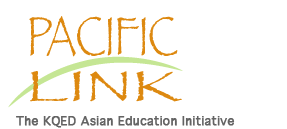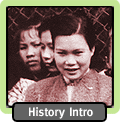
 |
 |
 |
 |
| [an error occurred while processing this directive] | |||||

|
|
||||
|
|

|
|
Immigration from Japan
Immigrants from Japan began entering the United States in the 1880s. They were largely farmers from southern Japan before U.S. laws limited their numbers. Japan's industrial and land reforms under the Meiji Restoration had disenfranchised many in this region, so they sought to earn a living across the ocean, where opportunities were opening up on the sugar plantations in Hawaii. From there, many found their way to California. In 1907, President Theodore Roosevelt forced the San Francisco School Board to rescind an order that segregated Japanese schoolchildren in return for Japan's curb on emigration of peasants and laborers to the United States. Japan entered into a treaty, the famous "Gentleman's Agreement," with the United States, agreeing to regulate the number and type of Japanese who were allowed to immigrate to the United States. Japan permitted only the educated to immigrate, restricting the immigration of laborers, whether unskilled or skilled. In the aftermath of World War I, reactionary nativism became the dominant strain in American politics. Minorities of many backgrounds came under attack. Americans viewed non-White immigrants solely as foreign elements who were related to the instabilities of the outside world and would bring those instabilities into America. Among the perceived threats were cheaper immigrant labor, Russian Bolshevik communism and Italian anarchism. In addition to playing out in a rash of criminal discriminatory incidents across the country, the backlash played out in several stages of restrictions on immigration. Although the Japanese had not been subjected to total exclusion like the Chinese, they were, by virtue of the 1790 Naturalization Act, ineligible to become naturalized citizens. Affecting many other Asians who were deemed "non-White," the 1924 Immigration Law barred entry to any aliens already deemed to be ineligible for citizenship. Thereafter, the Japanese community could only grow by virtue of native births in the United States. Unlike the Chinese, however, the Japanese had had the advantage of women being able to gain entry during the Gentleman's Agreement period. Therefore, for a relatively short period of time, Japanese and Japanese Americans became the most prominent Asian American community. In 1930, the Nisei, American-born Japanese, formed the Japanese American Citizens League (JACL) to address the discriminatory laws and ordinances aimed at them and their immigrant parents. Because JACL restricted its membership to those who were American citizens, it effectively barred participation from Issei, their immigrant parents; they, along with any immigrant from any Asian country, were determined not to be "aliens ineligible for citizenship." They also tried to distance themselves from Japanese imperial aggression against China. Japan's attack on Pearl Harbor in 1941 was a tremendous blow to the Japanese community. No matter the activism of those who had objected to Japan's imperialism -- the entire relationship between the United States and Japanese Americans and Japanese immigrants changed. Suddenly, China became a U.S. ally; Japan was the enemy. President Franklin D. Roosevelt signed Executive Order 9066, and Japanese immigrants and their Nisei children were swiftly ushered into internment camps for the remainder of the war.
Japanese immigration did not resume until the barrier against "aliens ineligible for citizenship" was completely removed as a condition of entry, which happened under the 1952 McCarran-Walter Immigration and Nationality Act. Congress passed the 1952 act over a veto by President Harry S. Truman. Japanese Immigration Through Angel IslandBy the time Angel Island Immigration Station opened in 1910, and until the Immigration Act of 1924 took effect, Japanese immigration was controlled by a treaty between the United States and Japan known as the Gentleman's Agreement of 1907. Japan, not wanting its citizens to be subjected to the discriminatory treatment that the Chinese immigrants had been subjected to, agreed to allow only the educated and their direct family members to leave and resettle in the United States. About 60,000 Japanese are estimated to have come through Angel Island Immigration Station. Most of them were picture brides or returning American-born Japanese. Often Japanese in the United States could not afford to return to Japan to marry, so they had friends and relatives find them prospective brides, whom they knew only through letters and photographs before the women arrived to begin their new lives in America. Given the Gentleman's Agreement between the two nations, the immigrants were usually released within two or three days, after having faced the standard medical examinations. Later, during World War II, the immigration station became a deportation and prisoner-of-war internment center. Some of the Japanese inscriptions on the barracks' walls reflect the sentiments of those awaiting deportation. |
| [an error occurred while processing this directive] |